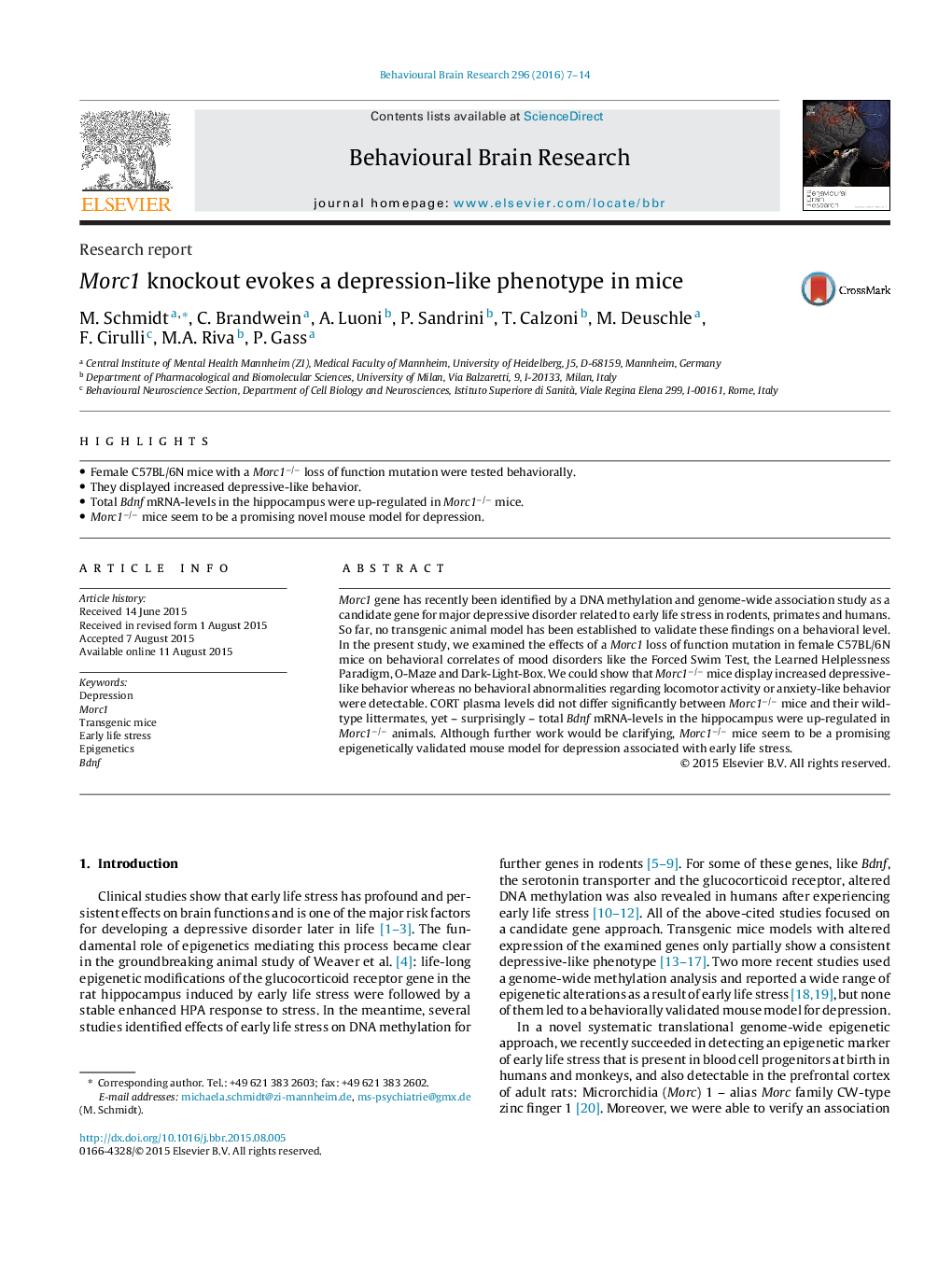| Article ID | Journal | Published Year | Pages | File Type |
|---|---|---|---|---|
| 4312315 | Behavioural Brain Research | 2016 | 8 Pages |
•Female C57BL/6N mice with a Morc1−/− loss of function mutation were tested behaviorally.•They displayed increased depressive-like behavior.•Total Bdnf mRNA-levels in the hippocampus were up-regulated in Morc1−/− mice.•Morc1−/− mice seem to be a promising novel mouse model for depression.
Morc1 gene has recently been identified by a DNA methylation and genome-wide association study as a candidate gene for major depressive disorder related to early life stress in rodents, primates and humans. So far, no transgenic animal model has been established to validate these findings on a behavioral level. In the present study, we examined the effects of a Morc1 loss of function mutation in female C57BL/6N mice on behavioral correlates of mood disorders like the Forced Swim Test, the Learned Helplessness Paradigm, O-Maze and Dark-Light-Box. We could show that Morc1−/− mice display increased depressive-like behavior whereas no behavioral abnormalities regarding locomotor activity or anxiety-like behavior were detectable. CORT plasma levels did not differ significantly between Morc1−/− mice and their wildtype littermates, yet – surprisingly – total Bdnf mRNA-levels in the hippocampus were up-regulated in Morc1−/− animals. Although further work would be clarifying, Morc1−/− mice seem to be a promising epigenetically validated mouse model for depression associated with early life stress.
